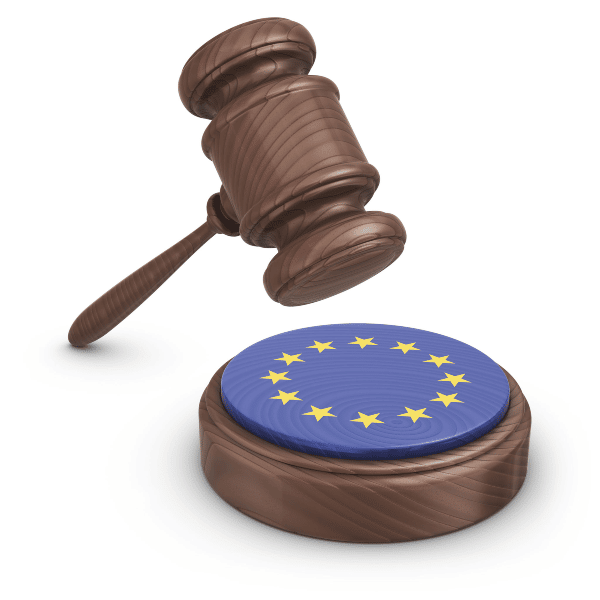EU approves crypto regulatory framework

After months of discussion, the EU Commission appears to have come to an agreement on the new crypto regulatory framework
Summary
- New crypto regulations released by the EU
- Chainalysis’ study on the current regulation of crypto in Europe
New crypto regulations released by the EU

At the moment Europe presents the most complete crypto regulation in the world
On 30 June, the European Union approved some of the cryptocurrency regulations that are due to come into effect in the coming months and are part of the MiCA regulatory framework, which was approved in the first reading in February and is expected to have its final implementation at the end of 2023.
There are still a number of contentious issues surrounding the regulations, which will certainly be reviewed between now and next year, and which are expected to mainly address financial stability and investor security.
But a first step, as stated by Italian MEP Raffaele Fitto, co-chair of the Ecr, who has been following the whole MiCA affair very closely, certainly seems to have been achieved:
After the approval of MiCA, Fitto stated that:
“The goal set is first and foremost to protect investors and financial stability by creating effective tools to counter fraudulent schemes. It is in this key that the provisions on the tracking and identification of cryptocurrency transfers should be interpreted: to prevent money laundering, financing of terrorism and other crimes, such as child pornography.
With respect to these kinds of objectives, the agreement reached seems very satisfactory and reflects many of the priorities that our group had also indicated during the work in the Econ Commission”.
Chainalysis’ study on the current regulation of crypto in Europe
There are still many doubts and issues to be resolved concerning the regulation, as pointed out in a careful analysis of the regulation by crypto analytics firm Chainalysis, which points out that:
“The Markets in Crypto Assets (MiCA) regulation will provide a unified licensing regime for the entire EU, meaning cryptocurrency businesses (or CASPs — Crypto-Asset Service Providers — as EU regulators call them) won’t need permission from each individual EU country in order to offer services to their citizens”.
An important issue, according to Chainalysis experts, concerns the checks that must be made by exchanges on money transfers to avoid tax evasion and money laundering. But there still remains some uncertainty regarding the threshold above which these controls must be mandatorily triggered and the reporting to the authorities of the transactions carried out.
Also important according to operators is the fact that the amendment that wanted to ban all cryptocurrencies that use the Proof of Work consensus system, such as Bitcoin and for now Ethereum, did not pass in the end.
Great attention is then given to the issue of monitoring personal or non-custodial wallets, which do not use the intermediation of an exchange or crypto company. Certainly, beyond some details that need to be sorted out, as Chainalysis experts conclude, MiCA’s regulatory framework appears to be one of the most comprehensive in the world as far as digital currencies are concerned.






 Bitcoin
Bitcoin  Ethereum
Ethereum  Tether
Tether  USDC
USDC  TRON
TRON  Dogecoin
Dogecoin  Cardano
Cardano  Bitcoin Cash
Bitcoin Cash  Chainlink
Chainlink  LEO Token
LEO Token  Monero
Monero  Stellar
Stellar  Zcash
Zcash  Litecoin
Litecoin  Hedera
Hedera  Dai
Dai  Cronos
Cronos  Tether Gold
Tether Gold  OKB
OKB  Ethereum Classic
Ethereum Classic  KuCoin
KuCoin  Gate
Gate  Algorand
Algorand  Cosmos Hub
Cosmos Hub  VeChain
VeChain  Dash
Dash  TrueUSD
TrueUSD  Tezos
Tezos  Stacks
Stacks  IOTA
IOTA  Basic Attention
Basic Attention  Theta Network
Theta Network  Decred
Decred  NEO
NEO  Synthetix
Synthetix  Qtum
Qtum  Ravencoin
Ravencoin  DigiByte
DigiByte  0x Protocol
0x Protocol  Zilliqa
Zilliqa  Nano
Nano  Numeraire
Numeraire  Siacoin
Siacoin  Waves
Waves  BUSD
BUSD  Ontology
Ontology  Enjin Coin
Enjin Coin  Status
Status  Pax Dollar
Pax Dollar  Hive
Hive  Lisk
Lisk  Steem
Steem  Huobi
Huobi  NEM
NEM  OMG Network
OMG Network  Bitcoin Gold
Bitcoin Gold  Augur
Augur  Ren
Ren  HUSD
HUSD